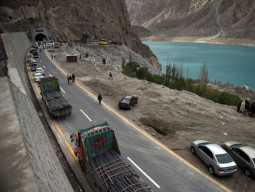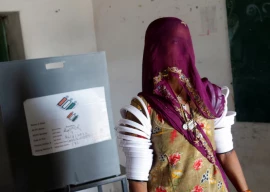
Now what do we really mean by the term ‘due share’ in the CPEC? If we go by the opposition parties’ definition, this seems to be a total shift of authority from the federal government to Gilgit-Baltistan in matters pertaining to the project. This daydreaming must be done away with. Such a wish list is found in other provinces too, especially in Sindh and Khyber-Pakhtunkhwa (K-P), where politicians think they are indispensable for the corridor. For political gains, such a stance may be acceptable, but we can safely assume that such wishes are not going to see the light of day. Gilgit-Baltistan’s significance can’t be underestimated. But it is also a reality that this region can’t be made the centre of all economic activity that the project will bring, given that its hilly terrain eats up 98 per cent of its land. The mountainous region is inhabited by about 1.5 million people and therefore can’t offer the kind of investment opportunities that Sindh, Punjab and K-P can.
This is understood by the politicians of Gilgit-Baltistan, but the dictates of political expediency often end up determining their behaviour. In this regard, the PPP is leading the campaign against the government. It desperately needs a platform to make a comeback from after humiliating electoral losses, and is making effective use of the CPEC by playing with popular sentiments. The party ruled Gilgit-Baltistan for five years, but could win only a single seat in the polls held under the supervision of the Pakistan Army seven months ago. The party’s Giglit-Baltistan chapter President Amjad Hussain is now trying to manoeuvre the situation and has been able to uplift the PPP’s graph in the region. The PML-N, which bagged 15 of the 24 seats in the Gilgit-Baltistan Legislative Assembly, appears to be on the back foot, at least for now. This largely emanates from the federal government’s lack of interest in securing the confidence of other parties, providing the opposition with a golden opportunity to manipulate the situation.
A solution to the constitutional issue facing the region is in sight for the first time in nearly seven decades, but that too appears to have been hijacked by the opposition. Referring to news reports appearing in the national media, they claim that China’s concerns over the disputed status of the region is forcing Pakistan to consider accepting Gilgit-Baltistan as its constitutional part. In reality, China has downplayed these reports and clarified its stance through its foreign ministry.
Chief Minister Hafeezur Rahman has repeatedly assured that two economic zones will be set up in the region and that land for one zone has been identified in Gilgit. But this has failed to pacify the opposition as it is insisting that the claim of the chief minister is not reflected anywhere in the project and that the region lacks representation at the CPEC table. Rahman is accused of “compromising the region’s interest”. This grey area is where the federal government and Minister for Planning, Development and Reform Ashan Iqbal need to focus on to remove suspicions. The people must be told which projects under the CPEC will be offered to Gilgit-Baltistan. Will these projects comprise roads, railway networks or fibre optic cables?
The CPEC offers a rare chance to all stakeholders to work for national integrity, which will help eliminate regional biases and sectarian inclinations. This opportunity must not be lost. The federal government and the opposition parties must realise this before it is too late.
Published in The Express Tribune, January 19th, 2016.
Like Opinion & Editorial on Facebook, follow @ETOpEd on Twitter to receive all updates on all our daily pieces.
















-(1)1714116455-0/Heeramandireactions-(2)-(1)1714116455-0-270x192.webp)











1714024018-0/ModiLara-(1)1714024018-0-270x192.webp)









COMMENTS (8)
Comments are moderated and generally will be posted if they are on-topic and not abusive.
For more information, please see our Comments FAQ